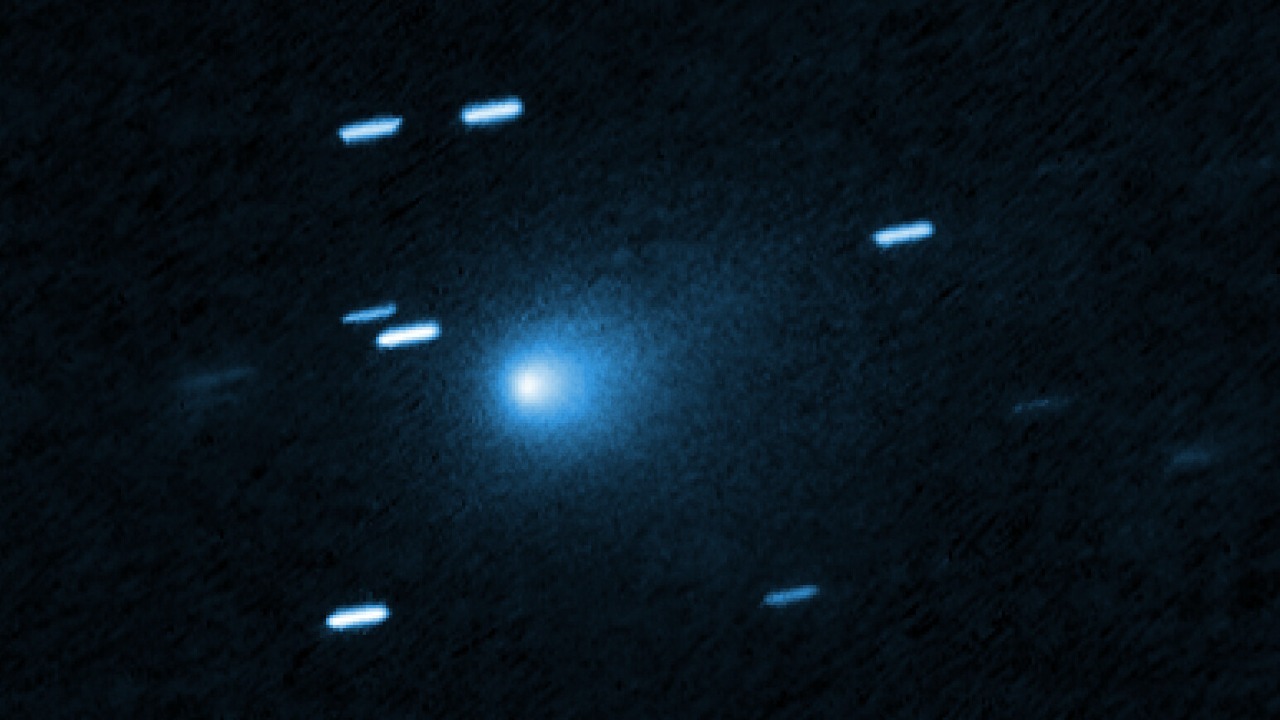
The interstellar object 3I/ATLAS, an extrasolar comet currently traversing our solar system, has recently exhibited a fascinating change in its tail’s direction. Observations by the Nordic Optical Telescope have revealed that what was once an anti-tail has now transformed into a proper tail. This dynamic shift, noted in findings from October 22, 2025, is accompanied by new images capturing a giant jet shooting toward the sun, underscoring the comet’s active passage through our cosmic neighborhood.
Early Signs of Tail Activity
Initially detected as an interstellar comet, 3I/ATLAS has intrigued astronomers with its tail’s unusual behavior as it speeds through the solar system. Observations from early September 2025 first highlighted the comet’s tail changing direction, a phenomenon not typically seen in solar system comets. The object’s extrasolar origin is believed to contribute to this atypical tail behavior, as the forces acting upon it differ from those affecting comets originating within our solar system. Early imaging provided glimpses of variability in the tail’s structure and orientation, hinting at the dynamic processes at play.
These initial observations set the stage for a deeper understanding of how interstellar objects interact with solar radiation and other forces as they journey through our solar system. The unique characteristics of 3I/ATLAS’s tail offer valuable insights into the physical properties and composition of such objects, which differ significantly from their solar system counterparts. This early detection of tail activity has paved the way for more detailed studies and observations, as scientists seek to unravel the mysteries of interstellar visitors.
Discovery of the Direction Shift
The Nordic Optical Telescope’s recent findings have shed light on a significant transformation in 3I/ATLAS’s tail. Observations from October 23, 2025, reveal that the comet’s anti-tail has turned into a proper tail, a change that has captured the attention of astronomers worldwide. This transformation, reported on October 22, 2025, highlights the complex interplay between solar radiation and the comet’s trajectory, which together influence the tail’s direction.
The shift from an anti-tail to a tail is a remarkable event, driven by the forces exerted by solar radiation and the comet’s path through the solar system. As 3I/ATLAS moves closer to the sun, these forces alter the orientation of the dust and gas emitted by the comet, resulting in the observed change. This phenomenon provides a unique opportunity to study the effects of solar radiation on interstellar objects and enhances our understanding of their behavior as they interact with our solar environment.
Current Position Behind the Sun
Currently, 3I/ATLAS is positioned behind the sun, which limits its visibility from Earth. This positioning presents challenges for astronomers attempting to track the comet’s movements and study its characteristics. However, the object is expected to return to a more favorable position in November, improving observation opportunities and allowing for more detailed analysis of its behavior and properties.
The period of solar conjunction, when the comet is obscured by the sun, poses significant challenges for tracking interstellar objects. During this time, astronomers must rely on predictive models and indirect observations to monitor the comet’s trajectory and activity. Preparatory steps are underway to ensure that once 3I/ATLAS re-emerges, scientists will be ready to capture new data and images, furthering our understanding of this intriguing interstellar visitor.
Evidence of a Giant Jet
New images of 3I/ATLAS have revealed a giant jet shooting toward the sun, adding another layer of complexity to the comet’s dynamic behavior. This jet, observed on October 23, 2025, is a striking feature that ties into the broader changes in the comet’s tail direction and outgassing processes. The presence of such a jet suggests active outgassing, which can significantly influence the comet’s trajectory and tail orientation.
The discovery of this jet provides valuable insights into the composition and activity levels of 3I/ATLAS. As an interstellar object, the comet’s behavior offers a rare glimpse into the processes that govern such bodies as they interact with solar radiation and other forces. Understanding these processes is crucial for developing a comprehensive picture of interstellar objects and their impact on our solar system. This knowledge not only enhances our understanding of 3I/ATLAS but also informs future studies of similar objects that may pass through our cosmic neighborhood.
More from MorningOverview